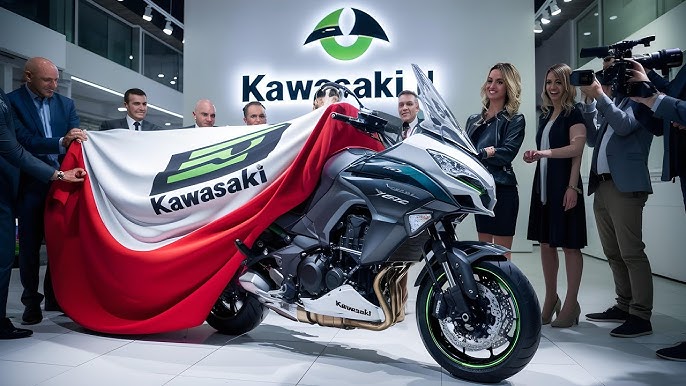The Kawasaki Versys 650 has long been a go-to choice for riders looking for a versatile, adventure-ready bike that doesn’t break the bank. For 2025, Kawasaki has made subtle but effective upgrades to make this mid-weight tourer even more appealing to long-distance riders and daily commuters alike.
But with increasing competition in the mid-range adventure segment, does the 2025 Versys 650 still stand strong? Let’s break it down.
What’s New in the 2025 Kawasaki Versys 650?
Kawasaki hasn’t drastically changed the Versys 650 formula, but the 2025 model comes with a few refinements that improve its touring capability and rider comfort.
| Feature | 2025 Kawasaki Versys 650 Update |
| Engine | 649cc Parallel-Twin, liquid-cooled |
| Power Output | ~67 hp @ 8,500 rpm, 47 lb-ft torque |
| Weight | Approx. 476 lbs (wet weight) |
| Suspension | Showa 41mm front forks with adjustable preload |
| Brakes | Dual-disc front, single-disc rear, ABS standard |
| Technology | New TFT display with Bluetooth connectivity |
| Seat Height | 33.1 inches |
| Fuel Capacity | 5.5 gallons |
| Price | Estimated $8,999 – $9,499 |
Engine & Performance: A Reliable Workhorse
The 649cc parallel-twin engine remains unchanged, and honestly, that’s a good thing! This engine has proven its reliability and efficiency over the years, offering a smooth power delivery that works well for both city riding and long-distance touring.
While it’s not the most powerful engine in the segment, the 67 hp and 47 lb-ft torque provide enough grunt for highway cruising and twisty roads without feeling underpowered. The six-speed gearbox ensures a comfortable ride, with a tall sixth gear making highway cruising effortless.
Why the Versys 650’s Engine Works:
- Linear powerband, easy to control
- Strong mid-range torque for overtaking
- Reliable and fuel-efficient
Comfort & Handling: Built for Long Rides
One of the biggest reasons riders love the Versys 650 is its exceptional comfort. For 2025, Kawasaki has refined the seat padding, making it more comfortable for longer rides.
The adjustable windscreen helps reduce wind buffeting at high speeds, and the upright seating position ensures you won’t feel cramped after hours in the saddle.
The suspension is well-balanced, absorbing road imperfections while still keeping the ride sporty. Whether you’re commuting, hitting twisty mountain roads, or touring across states, the Versys 650 handles it all with ease.
Technology Upgrades: Finally a Modern Display!
One of the biggest complaints about the older Versys 650 models was the outdated instrument cluster. For 2025, Kawasaki finally upgraded it to a TFT display with Bluetooth connectivity, allowing riders to pair their smartphones for navigation, notifications, and music control.
This is a huge step up from the previous basic LCD screen and makes the bike feel more in line with modern touring motorcycles.
New Features in the 2025 Versys 650:
- TFT display with smartphone connectivity.
- Ride modes & fuel efficiency indicators.
- Adjustable windshield for better aerodynamics.
Who Should Buy the 2025 Kawasaki Versys 650?
The Versys 650 is built for riders who love touring but don’t want to deal with the bulk and weight of larger adventure bikes. It’s comfortable, easy to ride, and affordable, making it a great mid-range option for both new and experienced riders.
However, if you’re looking for off-road capability, this isn’t a hardcore adventure bike. It can handle light gravel roads, but it’s more suited for pavement and long-distance road touring.
Pros & Cons of the 2025 Kawasaki Versys 650
| Pros | Cons |
| Excellent comfort for long rides | Not ideal for off-road riding |
| Fuel-efficient and reliable engine | Lacks cruise control |
| TFT display with Bluetooth | Slightly heavier than some competitors |
| Great value for money | No electronic riding aids (besides ABS) |
Final Verdict: Is the 2025 Versys 650 Worth It?
If you’re looking for a comfortable, reliable, and affordable touring motorcycle, the 2025 Kawasaki Versys 650 is still one of the best choices in its segment.
It may not have all the high-end electronics found on premium adventure bikes, but it does everything you need—without the extra cost.






